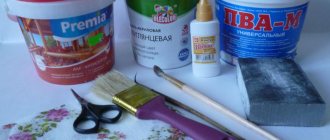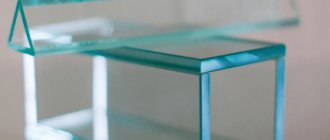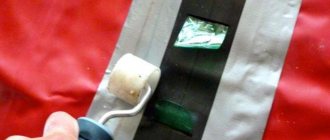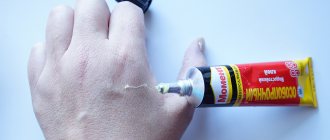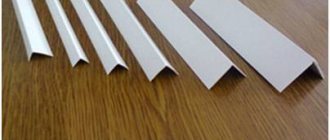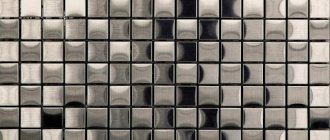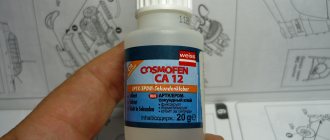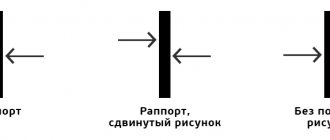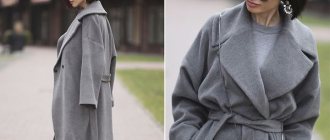PVA (polyvinyl acetate) glue is widely used for gluing fabric. Attaching decor to textiles, repairing and gluing seams is not only done using the standard method: thread and needle. Fabric glue is different from other types because the manufacturer assumes that the fabric will wash, bend, etc. Textile glue is an excellent alternative to thread, because it contains substances that prevent the appearance of puffs. The glue can be used for decoupage, clothing repair, appliqué, when processing seams, etc.
In this list we will try to figure out which glue is best, but we warn you - it is not an easy task! All of these adhesive compositions are considered the best among consumers.
Textile glue Prym Textil 968008
Volume : 30 g.
Price : 344 rub.
Textile adhesive Prym Textil 968008 glues various materials: rubber, leather, wood, PVC, etc. Widely used for hems of curtains and curtains. Once the glue dries, it becomes completely clear, so you no longer have to worry about nasty stains.
Washing textiles with glue on them is allowed at a temperature of no more than 40 degrees. The products from the German company have already been appreciated by many for their high quality. The only negative: some buyers are faced with an unpleasant situation - when ordering glue online, they receive it in a dried form. Please check the adhesive on site when you order.
Sewline water-soluble glue stick
Volume : 7 g.
Price : 430 rub.
Sewline glue sticks were created using innovative technology, thanks to which the fabric can be washed and bent without fear that the glued seams will come apart. This glue easily joins layers of fabric intended for sewing, and after that it is also easy to wash off with water.
After drying, the glue leaves no traces. Thanks to the interesting idea, it is very convenient to use the glue - the rod extends. You can immediately purchase a package of replacement rods. Externally, the glue is almost indistinguishable from the pen, and only after you open the cap you will see blue glue.
Useful tips
To work with glue for fabric or decoupage as productively as possible, to create high-quality, reliable and durable work, you can use the following tips from professional craftsmen:
- On the surfaces and materials to be glued, it is necessary to remove any foreign objects, including protruding threads, scraps, and remnants of old glue that will negatively affect the adhesion.
- When using glue, you need to be extremely careful, especially when using quick-drying compounds; it will not always be possible to correct flaws. To protect the material from possible errors, you need to protect nearby areas from accidental contact with glue.
- It is necessary to take into account the peculiarities of using glued products, clothing or fabrics. For example, if this is a robe, then you need to choose the most strong and durable glue. Glue with a light and delicate texture should be used for weightless materials and summer items. In the case of light and white clothes, you need to choose transparent compounds that do not change color after drying.
- If the glue will come into contact with the skin, then you need to choose environmentally friendly compounds without foreign additives and impurities, so as not to provoke skin allergies.
Note! To remove glue residue from fabric, you need to take into account the type of adhesive solution, and also use alcohol, acetone, soapy water, vinegar, solvents, salt, gasoline or talc, as well as specialized products as a cleaner.
Which fabric glue to choose (2 videos)
Types of fabric glue (15 photos)
Krylon spray adhesive
Volume : 400 ml.
Price : 995 rub.
Aerosol adhesive Krylon spray adhesive is ideal for artistic and decorative works. It does not contain acids, so you will not see any stains on the fabric. In addition to paper, glue is also used for gluing:
- parchment;
- paper;
- canvas;
- photos;
- decoupage, etc.
Before use, be sure to treat the product: it must be clean. The glue is applied from a distance of 20-40 cm in a smooth movement from left to right. Since the can is flammable, it should not be sprayed near a fire. It is advisable to ventilate the room when working. The glue is made in the USA.
Universal glue KORES
Volume : 125 ml.
Price : 367 rub.
The adhesive made in the Czech Republic is suitable for more than just gluing fabric. It also bonds wood and plastic. Judging by the numerous reviews, KORES deserves attention.
The glue is universal and suitable for any surface, but be careful - it is toxic, so it is recommended to store it out of the reach of children. Sold in different volumes: 500 g, 1000 g, 20 g, etc. The glue has a high bonding rate and can withstand 5 freeze/thaw cycles at -18°C.
Application
Glue for gluing fabric to fabric is used in the following processes:
- Processing the edges of various clothes - the bottom of a skirt, the sleeves of a jacket or blouse and others.
- For designer clothing in the form of a combination of various fabrics and patches.
- For applying various patterns and applications to textiles.
- For finishing the bottom of curtains, curtains, tulle.
- For upholstery of furniture and other works in this field.
You can see what the glued and processed elements look like in the photo.
Permanent adhesive for fabric PEBEO Setacolor
Volume : 45 ml.
Price : 1,020 rub.
Whatever you want to glue, PEBEO Setacolor will do it perfectly. It is suitable for fabric, cardboard, wood and other materials. The fabric can be washed 48 hours after the glue has been applied to the product. Optimal temperature: 40 degrees. The composition does not tolerate freezing.
PEBEO is a French company that also produces paints, thanks to which artists create incredibly beautiful paintings! The paints of this company do not fade or peel - one can judge its products by this fact alone. The glue is suitable for any type of fabric; it is recommended to apply it with a sponge, brush or pipette (whatever you have on hand).
Textile glue Gutermann HT2
Volume : 30 g.
Price : 299 rub.
Gutermann HT2 adhesive is designed for working with natural materials, suitable for gluing cotton, linen, felt, and denim. Widely used in creativity, where it is necessary to glue various applications.
Freshly applied textile glue can be easily washed off with water, but only under one condition - while it is “fresh”. At the time of application, the glue is white, but subsequently loses color, becoming transparent. According to buyers, it is more profitable to buy glue on the Internet; there is a markup for it in stores. Glues the yarn tightly, just one drop is enough.
How to choose
If you choose the right textile glue for the appropriate fabric, this will simplify and speed up the work as much as possible, and create a strong, high-quality, clean and durable connection.
The most popular substance, which received the maximum number of positive reviews, was silicone fabric adhesive “liquid thread”. It is great for any materials, even felt and coconut, and is actively used in handicrafts to create applique on fabrics and clothes, to mask minor defects, holes, cuts on pants, jackets, sweaters.
For gluing synthetic materials, “Dubok” glue is suitable - a universal and waterproof material. If things are actively worn, often ironed and washed, then choose the “Secunda” universal glue, which is resistant to wear and mechanical stress.
It dries instantly and is suitable for working with leather items and shoes, foam rubber, even porcelain. Using it, you can find original ways to disguise damage. In the manufacturer’s line you can find varieties of narrow specialization that allow you to eliminate serious damage. In this case, the gluing efficiency will be much higher, as will the cost of the substance itself.
Moment or PVA glue is suitable for gluing fabric.
Professional substances, which have several advantages compared to conventional compounds, increase the quality of finished work:
- No stains on materials.
- No unpleasant aroma.
- Transparent composition.
- Optimal consistency that does not allow the glue to spread.
- Resistant to washing, ironing, and aggressive detergents.
Glues with the listed qualities are also ideal for needlework and creating crafts, including decoupage and applique.
To choose the optimal textile adhesive for fabric, you need to pay attention to the following criteria:
- Resistance to moisture, water and heat, since the glued area on fabrics and clothes will most likely be subject to washing and ironing.
- Formation of an elastic film, which will create a strong bond. Even after stretching the material, the integrity will not be compromised.
- A significant drying time, thanks to which you can correct minor defects and perform gluing carefully.
- A universal composition that allows you to work with absolutely any artificial or natural materials, including cotton, wool, and synthetics.
On video: Decoupage glue: special or PVA? Which one and how to choose?
Glue Moment textiles
Volume : 20 g.
Price : 224 rub.
Moment glue , because it is sold in almost every hardware store. But did you know that there is also a separate type of it – the moment for gluing textiles? Waterproof adhesive perfectly bonds a wide range of materials and is a durable, water-resistant substance.
There are a number of things that glue will not accept, these are:
- rubber;
- polypropylene;
- polyethylene;
- glass;
- silicone rubber.
Also not suitable for dishes that contain hot liquids. The setting time is only 1 minute - after this time you can enjoy the fruits of your creativity!
UHU Alleskleber universal glue
Volume : 60 ml.
Price : 189 rub.
This adhesive is suitable for a variety of materials, be it porcelain, ceramics or fabric. The glue is made on the basis of synthetic resin, which came into use relatively recently - at the beginning of the last century.
The glue is water resistant, so the fabric can be washed. UHU Alleskleber can withstand temperatures up to +120 degrees, ideal for household work, as well as hobbies and modeling. Before work, do not forget to prepare the surfaces - they must be clean and dry. The glue is made in Germany, which inspires confidence among many.
Procedure for working with thermal stickers
Despite the fact that there is a wide variety of thermal adhesives, application is approximately the same. The procedure is usually as follows:
- clothes are pre-prepared on a horizontal surface;
- The thermal print is placed with the wrong side down;
- cover with protective material on top;
- the iron is heated to the highest possible temperature;
- press on the decal under the paper for 10-60 seconds.
Textile glue UHU Textil
Volume : 19 g.
Price : 331 rub.
UHU Textil glue is designed for gluing a variety of fabrics: felt, coconut thread, jeans, linen and many other fabrics. The glue cannot be used on silk, as well as on those fabrics where the proportion of synthetic fibers is more than 60%. When dry, the substance acquires a transparent color and retains elasticity.
Gluing surfaces couldn't be easier: apply glue to one surface, and then connect it to the other, pressing lightly. It only takes 5 minutes to dry. After 30 minutes, the fabric can be ironed to give it stability.
Types and types of adhesive composition
To decide which glue is best to choose for working with fabric, you need to study the most relevant types:
- Rubber glue. To glue elements of a suit or other clothing made of any fabric without stains or marks, you can use rubber-based glue. To do this, apply a thin layer of the substance to the surfaces intended for gluing and let it dry. After an hour, a film forms on the surface; it must be lubricated with acetone and the materials must be combined. To ensure good adhesion and strength, you need to press down the glued areas with a weight.
- Perchlorovinyl glue. It needs to be applied in 2 layers, after applying the first you need to wait for it to dry completely. This happens in 10 minutes, and then a second layer is applied and left to dry for 3 minutes. After gluing the surfaces, you need to roll out the seam with a roller for uniform distribution and place a weight on the material for 2 days.
- Fabric glue “liquid thread”. It has a transparent consistency. To glue the surfaces, you need to apply the composition in a thin, even layer and after a few seconds fasten to each other, pressing firmly.
- Nitrocellulose composition. After applying it, you need to connect the materials immediately, and then press them down with a load.
- Polyvinyl acetate glue is applied to the 2 surfaces to be glued, after a couple of minutes they need to be tightly connected and pressed down with a weight.

